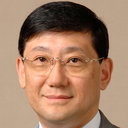[Astrogliopathy as a loss of astroglial protective function against glycoxidative stress under hyperglycemia].
Ключевые слова
абстрактный
Reactive oxygen species (ROS) derived from mitochondria play an essential role in stroke as well as in neurodegenerative disorders. Although hyperglycemia associated with diabetes mellitus is well known to enhance ROS production in vascular endothelial cells, the effects of either acute or chronic high glucose environments on neurons and glial cells remain unclear. Astroglia play a pivotal role in glucose metabolism. Thus, the astroglial metabolic response to high glucose environments is an interesting subject. In particular, the glutathione/pentose phosphate pathway (PPP) system, which is a major defense mechanism against ROS in the brain, contributes to glucose metabolism and is more active in astroglia. We propose that high glucose environments activate PPP through an increased flux to the hexosamine biosynthetic pathway (HBP). HBP is known to induce endoplasmic reticulum (ER) stress under hyperglycemia, resulting in the nuclear translocation of nuclear factor-erythroid-2-related factor 2 (Nrf2), a master regulator of phase 2 detoxifying enzymes including glucose-6-phosphate dehydrogenase that regulates PPP activity, as Nrf2 is reported to be a direct substrate of protein kinase RNA (PKR)-like ER kinase (PERK), a transducer of ER stress. Therefore, the phosphorylation of Nrf2 by hyperglycemia-induced ER stress facilitates Nrf2 translocation through PERK, thus activating the PPP. If acute or chronic hyperglycemia induces PPP activation in astroglia to reduce ROS, reducing the glucose concentration may be accompanied by a risk, which may explain the lack of evidence that strict glycemic control during the acute phase of stroke conveys no beneficial effect.



